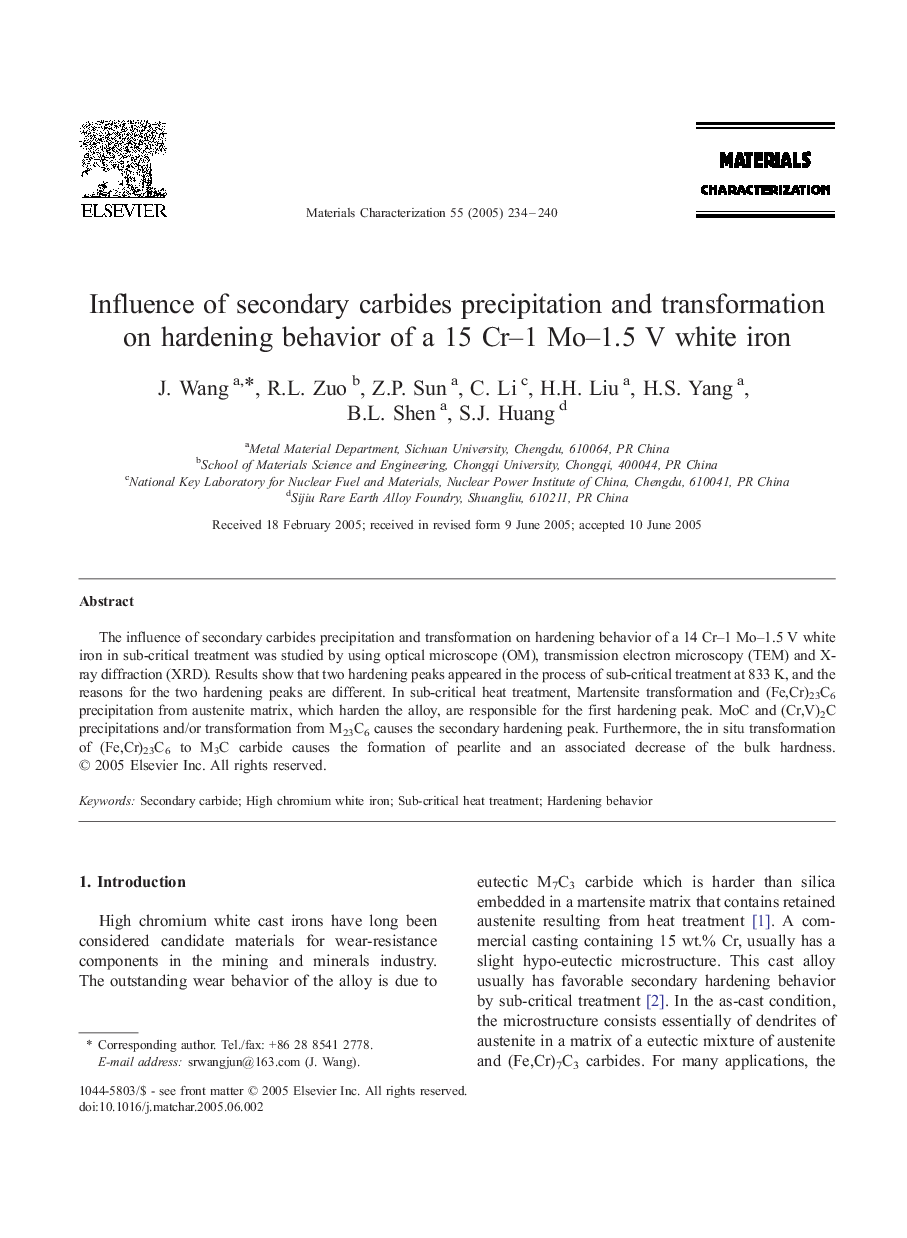| Article ID | Journal | Published Year | Pages | File Type |
|---|---|---|---|---|
| 10645735 | Materials Characterization | 2005 | 7 Pages |
Abstract
The influence of secondary carbides precipitation and transformation on hardening behavior of a 14 Cr-1 Mo-1.5 V white iron in sub-critical treatment was studied by using optical microscope (OM), transmission electron microscopy (TEM) and X-ray diffraction (XRD). Results show that two hardening peaks appeared in the process of sub-critical treatment at 833 K, and the reasons for the two hardening peaks are different. In sub-critical heat treatment, Martensite transformation and (Fe,Cr)23C6 precipitation from austenite matrix, which harden the alloy, are responsible for the first hardening peak. MoC and (Cr,V)2C precipitations and/or transformation from M23C6 causes the secondary hardening peak. Furthermore, the in situ transformation of (Fe,Cr)23C6 to M3C carbide causes the formation of pearlite and an associated decrease of the bulk hardness.
Related Topics
Physical Sciences and Engineering
Materials Science
Materials Science (General)
Authors
J. Wang, R.L. Zuo, Z.P. Sun, C. Li, H.H. Liu, H.S. Yang, B.L. Shen, S.J. Huang,
